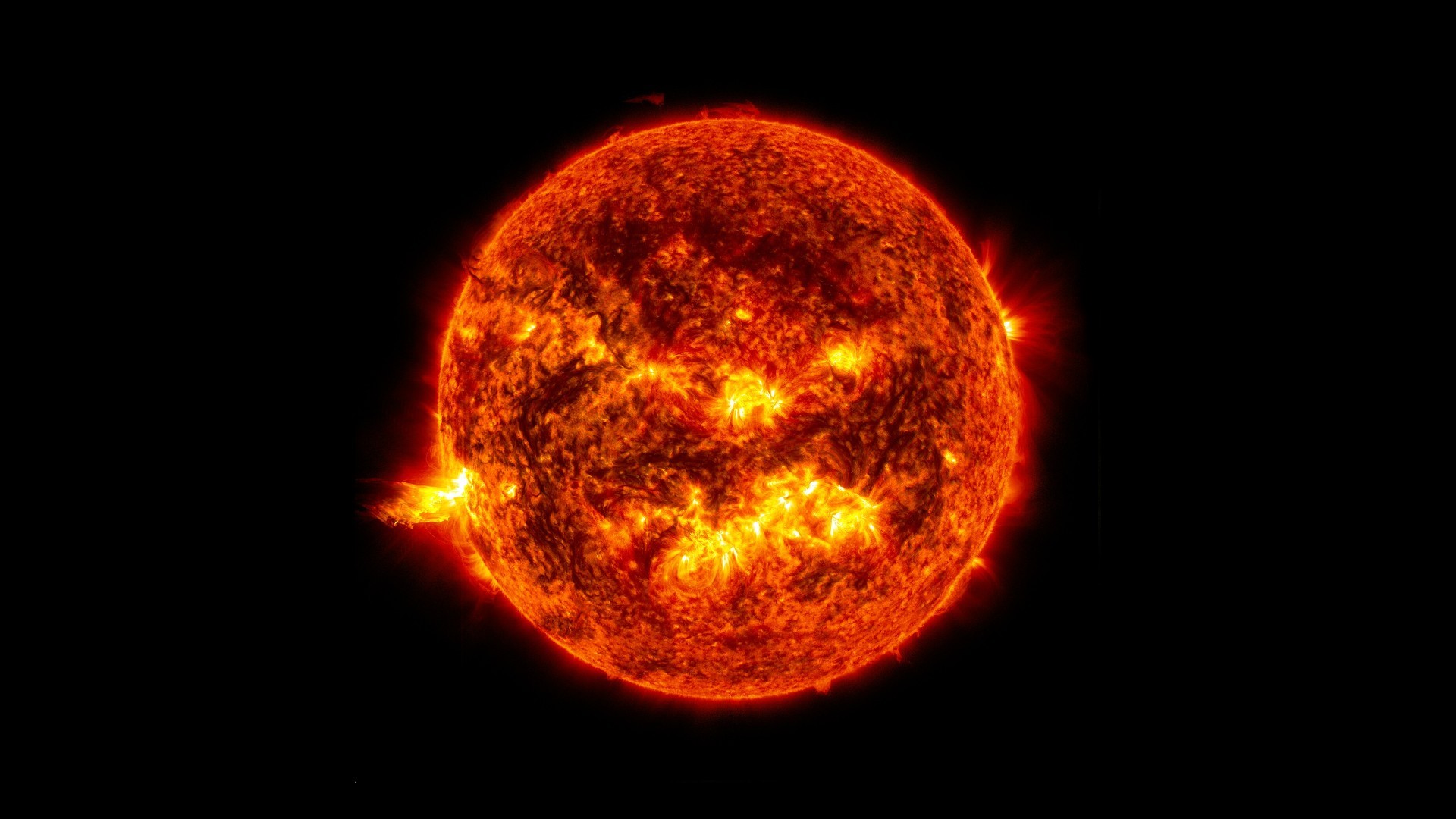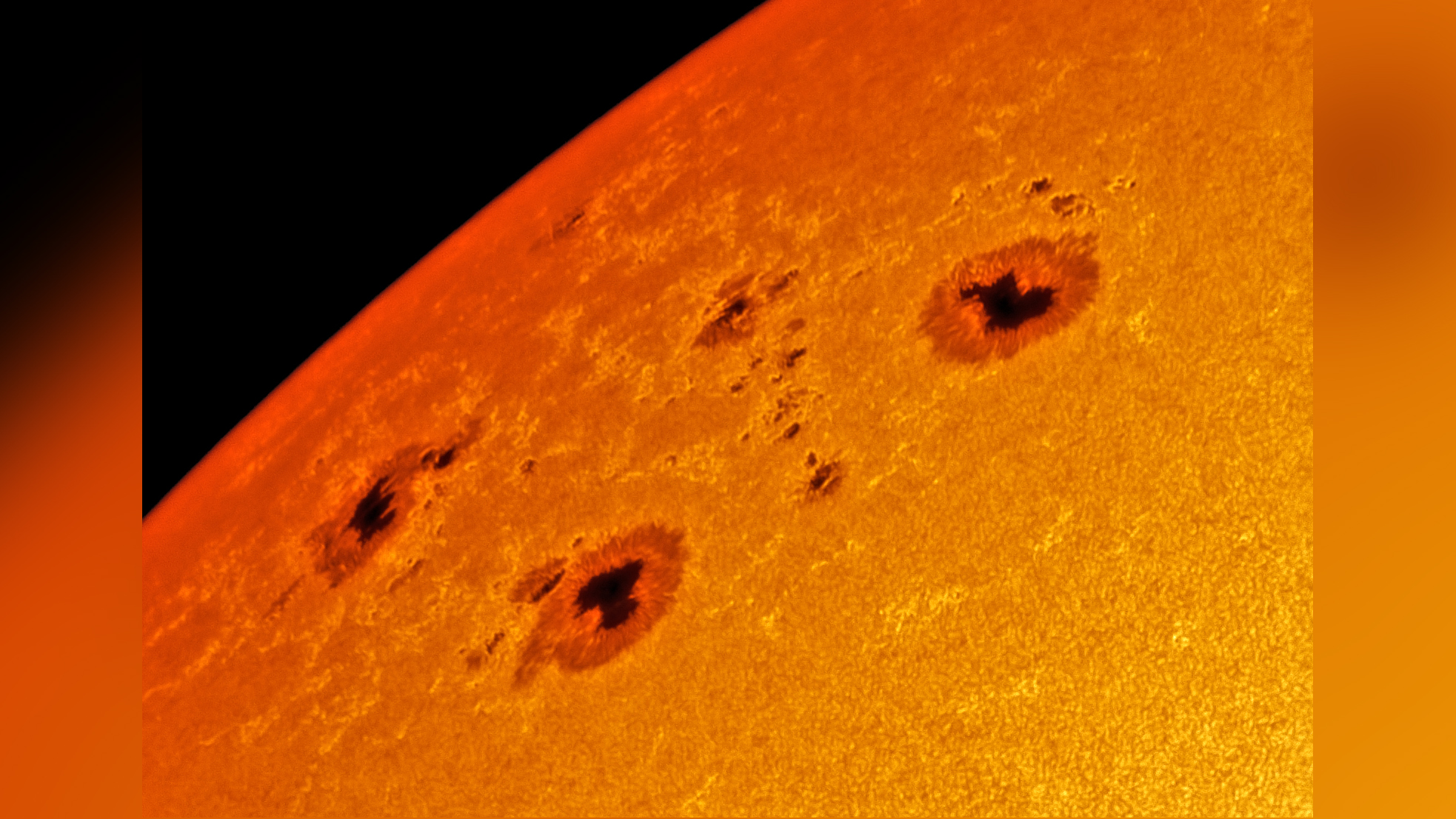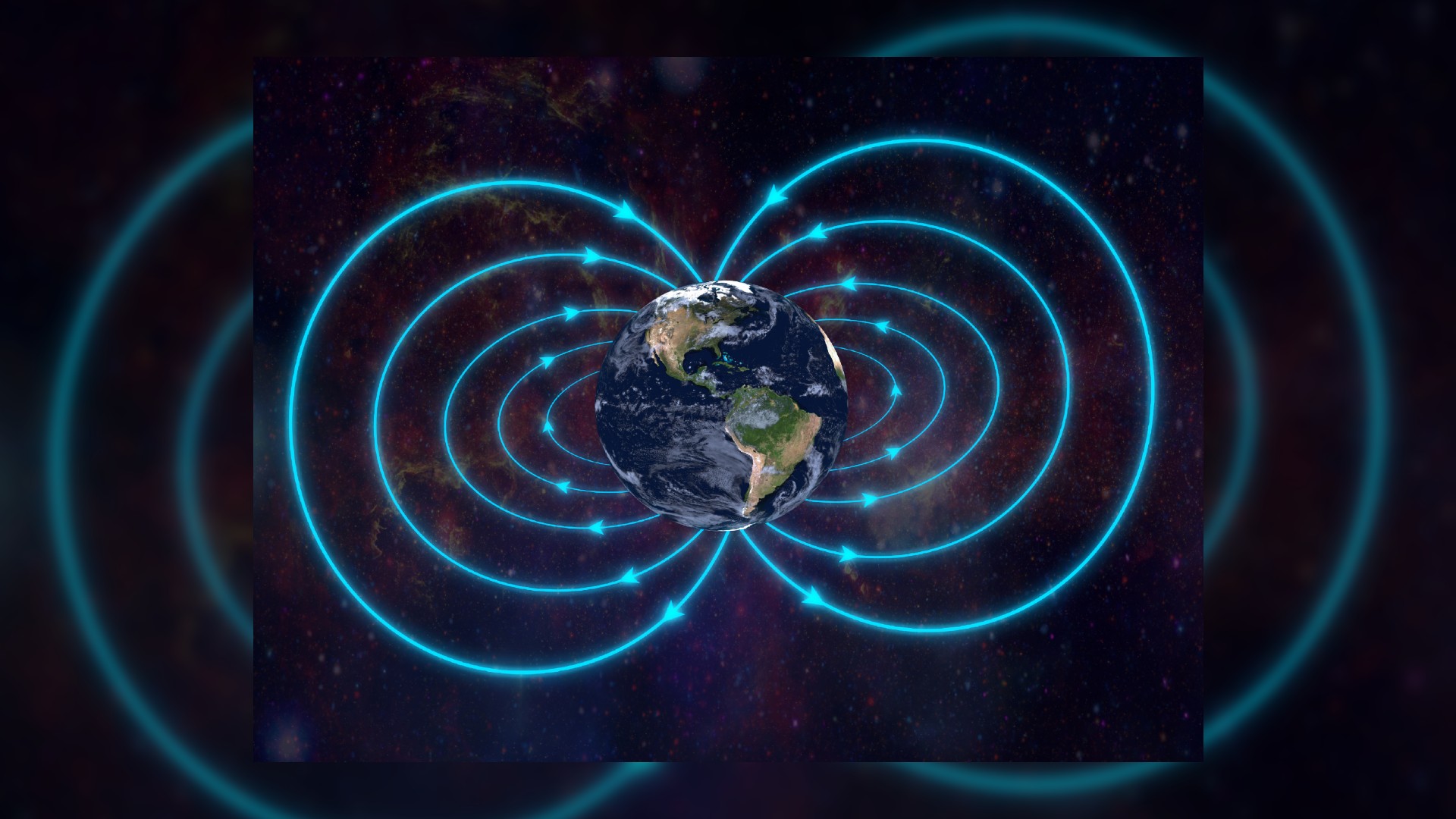What are solar flares?
High-energy eruptions of radiation from the sun's atmosphere can sometimes launch blobs of plasma toward Earth.

A solar flare is an intense burst of electromagnetic radiation generated in the sun's atmosphere — the layers of sparse but hot gas that lie above its visible surface, or photosphere.
The vast amounts of energy released by a typical solar flare are mostly radiated away in the ultraviolet and X-ray part of the electromagnetic (EM) spectrum, at shorter wavelengths with higher energies than visible light. Solar flares can heat nearby material in the sun's atmosphere, launching huge blobs of plasma at Earth in what's known as a coronal mass ejection.
Earth's atmosphere filters out most of these wavelengths, so satellites and specialized instruments onboard spacecraft are the main ways scientists detect the high-energy radiation from flares. However, the visible light component of a flare can be viewed from Earth using specialized solar-observing telescopes that filter out all but a narrow band of wavelengths. On rare occasions, powerful flares can even be spotted as intense, star-like points of light standing out against the disk of the sun when it is viewed by safe projection through a telescope, according to the American Astronomical Society.
"Solar flares are classed according to how bright they are in soft X-rays," Stephanie Yardley, a space weather specialist at University College London's Mullard Space Science Laboratory in the U.K., told Live Science. "The weakest flares are A or B-class, while the strongest flares are C, M or X-class. Each letter represents an increase in energy of a factor of 10 and within each class there is a number scale from 1-9. The biggest event on record was the Carrington Event in 1859 [named for English astronomer Richard Carrington, who spotted it by chance while observing the sun] which has an estimated soft X-ray peak of X45. The second strongest event was an X35-class solar flare on 4 November 2003."
Recent solar flares in 2022
The strength and frequency of flares, along with many other aspects of solar activity, varies in a "solar cycle" that lasts roughly 11 years. This is the time it takes for an orderly global magnetic field to form amid the sun's churning plasma, then intensify, become tangled and completely break down. The formation of magnetic field loops, sunspots and flares is greatest in the middle of this cycle — known as solar maximum. As the current solar maximum (predicted to occur around 2024) approaches, the number of flares is currently increasing sharply.
| Header Cell - Column 0 | Solar cycle | Date | Region | Start | Maximum | End |
|---|---|---|---|---|---|---|
| 1 | X2.2 | 2022/04/20 | 2992 | 03:41 | 03:57 | 04:04 |
| 2 | X1.5 | 2022/05/10 | 3006 | 13:50 | 13:55 | 13:59 |
| 3 | X1.3 | 2022/03/30 | 2975 | 17:21 | 17:37 | 17:46 |
| 4 | X1.1 | 2022/05/03 | - | 13:08 | 13:25 | 13:31 |
| 5 | X1.1 | 2022/04/17 | 2994 | 13:37 | 13:47 | 13:52 |
You can visit SpaceWeatherLive, where the data for the table above came, and check out the top 50 solar flares for each year since 1996.
Flare origins
Flares form in areas where loops of magnetic field run through the solar atmosphere. Generated by the churning of plasma (electrically charged hot gas) inside the sun, these loops push out through the surface. Cooler areas around their entry and exit points appear as dark sunspots amid the hotter, brighter gas, while the loops also channel relatively cool gas along them, appearing as dark "filaments" when silhouetted against the photosphere, or as pinkish prominences around the edge or limb of the sun (best seen during a total solar eclipse).
Sign up for the Live Science daily newsletter now
Get the world’s most fascinating discoveries delivered straight to your inbox.
A flare occurs when the lower regions of a magnetic loop become pinched together in a region of the atmosphere called the lower corona. This causes the magnetic field to "short circuit" — reconnecting much closer to the surface and cutting loose the material above. Because a magnetic loop high above the surface carries far more energy than one lower down, these reconnection processes can unleash a huge amount of excess energy. This heats the solar atmosphere around the point of reconnection to temperatures of 50 to 68 million degrees Fahrenheit (10 to 20 million degrees Celsius), much hotter than the 2 million F (1 million C) it normally is, causing it to emit a violent burst of radiation.

CMEs and proton storms
Astronomers use the term "flare" specifically for the burst of energy and radiation on the sun, but it is associated with a variety of other effects. For example, material from the solar atmosphere heated by the flare can begin expanding violently, eventually forming a coronal mass ejection, or CME — a huge cloud of particles blasted out in a specific direction, which may take several days to reach Earth's orbit.
The most violent flares also produce an effect called a solar proton storm, as the shock from an expanding CME accelerates nearby protons (subatomic charged particles), forcing them outwards at far higher speeds than the CME itself. In some cases, where the sun's magnetic field is in a favorable orientation, the protons can reach a substantial fraction of the speed of light. EM radiation from a flare reaches Earth in just over 8 minutes, but the fastest proton storms may arrive just 30 minutes or so later.
Effects on Earth
High-energy X-rays and ultraviolet radiation from a flare are absorbed in our planet's upper atmosphere, and Earth's magnetic field largely deflects solar protons, which helps shield Earth from the most dangerous effects of these solar events. However, solar flares can still have significant effects on Earth. Individual atoms and molecules of gas in Earth’s atmosphere become ionized, or electrically charged, when they absorb radiation from flares.. This can interfere with short-wave radio communications, which rely on bouncing signals from charged gases in the ionosphere layer. Electric currents flowing through the ionized gases and within the proton storm can also distort the overall structure of Earth's magnetic field (though not as much as the CME that may strike later).
"X-class flares can trigger radio blackouts and long-lasting radiation storms in the Earth's upper atmosphere," Yardley said. "M-class can also cause radio blackouts in the Earth's polar regions along with minor radiation storms."

Solar flares may present little direct danger to life on Earth, but what about astronauts outside the atmosphere? In 2005, NASA experts considered the possible effects of a proton storm on future space missions. They concluded that those inside Earth's protective magnetosphere would be relatively safe, but astronauts in exposed environments — such as on the surface of the moon — would be vulnerable to radiation sickness after bombardment by solar protons.
In general, however, flares pose a greater danger to human technology than to people themselves. X-rays striking a satellite can ionize its materials, while protons can electrify the outer surfaces of those materials, creating short circuits and malfunctions. Energy poured into the upper atmosphere can also cause gases there to heat up and expand, increasing drag on satellites and causing their orbits to decay. In February 2022, a fleet of more than 40 Starlink mini-satellites were lost in this way shortly after launch.
A superflare threat?
Perhaps surprisingly, red dwarf stars, which are normally much fainter and cooler than the sun, are capable of producing flares with far higher overall energy, due to differences in their internal structure. Could our sun ever surprise us with such a violent outburst?
"Superflares are produced by stars that have very strong magnetic fields and therefore are associated with more violent activity than our Sun," Yardley said. "However, super flares do happen on stars that are similar to our Sun. Evidence from studying carbon isotopes found in tree rings suggests that superflares may have been produced by our Sun thousands of years ago and so could occur in the future — but these events are extremely rare."
Additional resources
- You can find NASA stories on solar flares and other aspects of space weather at their official site.
- Several satellites are constantly monitoring the Sun on the watch for solar flares, including the European Space Agency/NASA Solar Orbiter.
- The US National Oceanic and Atmospheric Administration (NOAA) tracks these events and provides forecasts of space weather.
Bibliography
https://eos.org/research-spotlights/new-model-predicts-big-solar-proton-storms
https://www.swsc-journal.org/articles/swsc/full_html/2020/01/swsc190079/swsc190079.html
https://science.nasa.gov/science-news/science-at-nasa/2005/10jun_newstorm/
https://eos.org/articles/scientists-claim-a-more-accurate-method-of-predicting-solar-flares
https://www.spaceweatherlive.com/en/help/what-is-a-solar-radiation-storm.html

After studying astronomy at University College London and Science Communication at Imperial College, Giles set out on an Exciting Adventure with Illustrated Publishing. He's since written a string of beautiful and successful books on astronomy, science and other cool subjects, and is also a regular contributor to magazines. When he's not doing the day job, you’ll find him fanboying about Doctor Who or lost in some obscure corner of history…









